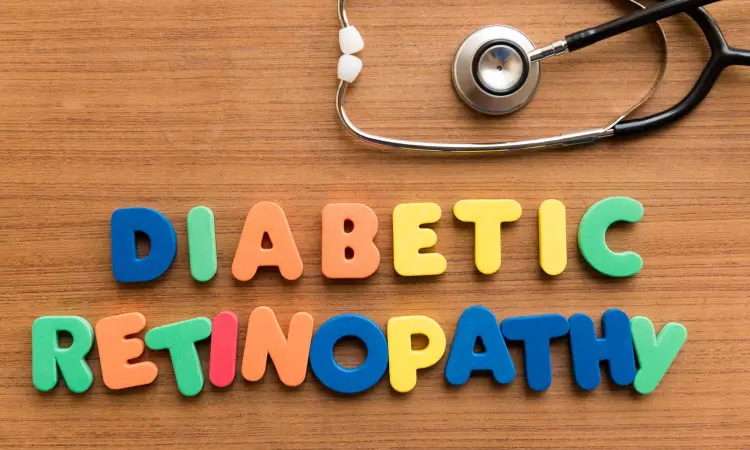- Home
- Medical news & Guidelines
- Anesthesiology
- Cardiology and CTVS
- Critical Care
- Dentistry
- Dermatology
- Diabetes and Endocrinology
- ENT
- Gastroenterology
- Medicine
- Nephrology
- Neurology
- Obstretics-Gynaecology
- Oncology
- Ophthalmology
- Orthopaedics
- Pediatrics-Neonatology
- Psychiatry
- Pulmonology
- Radiology
- Surgery
- Urology
- Laboratory Medicine
- Diet
- Nursing
- Paramedical
- Physiotherapy
- Health news
- Fact Check
- Bone Health Fact Check
- Brain Health Fact Check
- Cancer Related Fact Check
- Child Care Fact Check
- Dental and oral health fact check
- Diabetes and metabolic health fact check
- Diet and Nutrition Fact Check
- Eye and ENT Care Fact Check
- Fitness fact check
- Gut health fact check
- Heart health fact check
- Kidney health fact check
- Medical education fact check
- Men's health fact check
- Respiratory fact check
- Skin and hair care fact check
- Vaccine and Immunization fact check
- Women's health fact check
- AYUSH
- State News
- Andaman and Nicobar Islands
- Andhra Pradesh
- Arunachal Pradesh
- Assam
- Bihar
- Chandigarh
- Chattisgarh
- Dadra and Nagar Haveli
- Daman and Diu
- Delhi
- Goa
- Gujarat
- Haryana
- Himachal Pradesh
- Jammu & Kashmir
- Jharkhand
- Karnataka
- Kerala
- Ladakh
- Lakshadweep
- Madhya Pradesh
- Maharashtra
- Manipur
- Meghalaya
- Mizoram
- Nagaland
- Odisha
- Puducherry
- Punjab
- Rajasthan
- Sikkim
- Tamil Nadu
- Telangana
- Tripura
- Uttar Pradesh
- Uttrakhand
- West Bengal
- Medical Education
- Industry
GLP-1 Agonists Tied to Slightly Increased Risk of New-Onset Diabetic Retinopathy: JAMA

USA: A large retrospective cohort study has revealed that the use of GLP-1 receptor agonists was associated with a 7% higher risk of developing new-onset diabetic retinopathy, although it did not increase the progression to proliferative retinopathy or diabetic macular edema. Regular eye screening is recommended for all patients taking these medications.
The research, published in JAMA Network Open by David J. Ramsey, MD, PhD, MPH, from the Department of Ophthalmology, Tufts University School of Medicine, Boston, and colleagues, examined whether glucagon-like peptide-1 receptor agonists (GLP-1 RAs) are associated with sight-threatening eye complications in patients with type 2 diabetes (T2D). While GLP-1 RAs are increasingly used for glycemic control and weight loss, concerns remain regarding their ocular safety profile.
Using data from the TriNetX database, the investigators analysed records from 185,066 adults with T2D and a hemoglobin A1c of at least 6.5%. Participants were matched through propensity score methods based on whether they had received at least two GLP-1 RA prescriptions, spaced six months apart. The follow-up period spanned two years, with outcomes assessed using Cox proportional hazard models.
Key Findings
- GLP-1 RA use was linked to a modest but statistically significant increase in the incidence of diabetic retinopathy (HR, 1.07).
- There was no significant increase in cases of nonarteritic anterior ischemic optic neuropathy (HR, 1.26).
- In patients with preexisting diabetic retinopathy, GLP-1 RAs did not associate with progression to proliferative diabetic retinopathy (HR, 1.06) or diabetic macular edema (HR, 0.98).
- Treatment was associated with reduced rates of vitreous hemorrhage (HR, 0.74), neovascular glaucoma (HR, 0.78), and new-onset blindness (HR, 0.77).
The findings suggest that while GLP-1 RAs may slightly raise the risk of developing diabetic retinopathy, they do not accelerate its advancement to more severe stages and may even reduce the occurrence of serious vision-threatening complications.
The authors noted several limitations, including reliance on electronic health records, which may vary in coding practices and completeness, and the absence of consistent HbA1c measurements to assess the role of rapid glucose lowering. Additionally, the study could not account for all social determinants of health or differences in access to ophthalmic care, which might influence detection and treatment rates. The lack of eye examination data, reliance on administrative coding for blindness, and the inability to distinguish among specific GLP-1 agents also constrain the interpretation.
Despite these limitations, the researchers emphasize the importance of regular ophthalmologic monitoring for all T2D patients prescribed GLP-1 RAs, regardless of their baseline retinal status. Further studies are needed to clarify whether the protective association with certain complications translates into long-term reductions in vision loss.
Reference:
Ramsey DJ, Makwana B, Dani SS, et al. GLP-1 Receptor Agonists and Sight-Threatening Ophthalmic Complications in Patients With Type 2 Diabetes. JAMA Netw Open. 2025;8(8):e2526321. doi:10.1001/jamanetworkopen.2025.26321
Dr Kamal Kant Kohli-MBBS, DTCD- a chest specialist with more than 30 years of practice and a flair for writing clinical articles, Dr Kamal Kant Kohli joined Medical Dialogues as a Chief Editor of Medical News. Besides writing articles, as an editor, he proofreads and verifies all the medical content published on Medical Dialogues including those coming from journals, studies,medical conferences,guidelines etc. Email: drkohli@medicaldialogues.in. Contact no. 011-43720751


